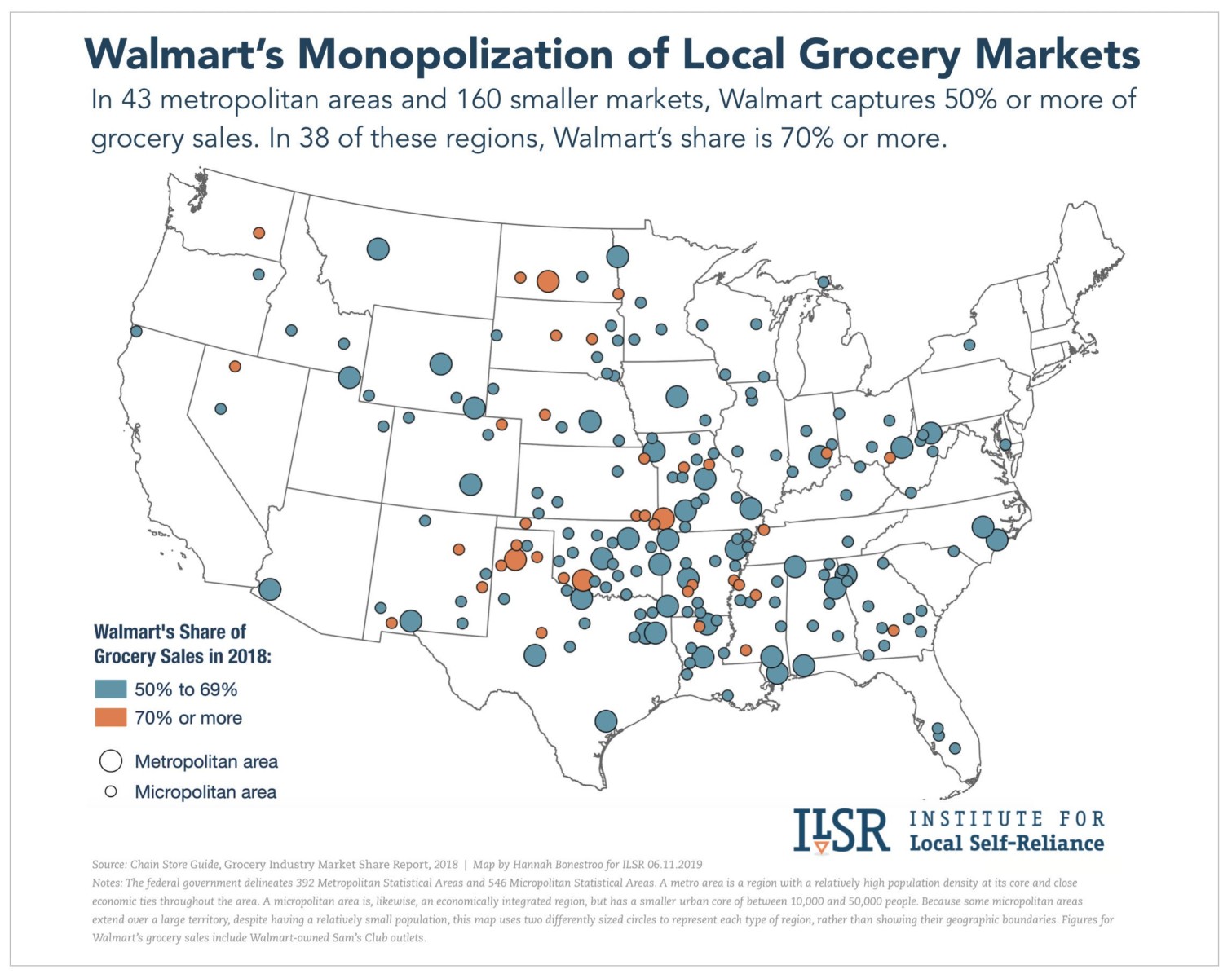
Source: ILSR; Hat tip Stacy Mitchell
This is a fascinating read from ILSR as to how Wal-Mart became the dominant grocer in the nation:
“In 43 metropolitan areas and 160 smaller markets, Walmart captures 50 percent or more of grocery sales, our analysis of 2018 spending data found. In 38 of these regions, Walmart’s share of the grocery market is 70 percent or more. Our findings provide a stark illustration of the failings of contemporary antitrust policy. They also show that more will be required to fix our broken markets than reforms to merger policy.”
The entire report is worth perusing, but what is so intriguing is how the analytics were able to identify the strength or weakness of the local land use regulations to reach its conclusion. Add to that Supreme Court decisions which undercut Anti-Trust enforcements, and you get a retail giant — and little or no competition.
“No other corporation in history has ever amassed this degree of control over the U.S. food system.”
The next closest company was the A&P supermarket chain, which at its peak in 1933, had a mere 16% market share of U.S. grocery sales.
Key takeaway: Wal-Mart was not an accident, it brilliantly exploited weak local land use laws, and then took big advantage of the openings provided by Supreme Court.
Source:
Walmart’s Monopolization of Local Grocery Markets
By Stacy Mitchell,
ILSR, June 2019
https://ilsr.org/wp-content/uploads/2019/06/Walmart_Grocery_Monopoly_Report-_final_for_site.pdf

